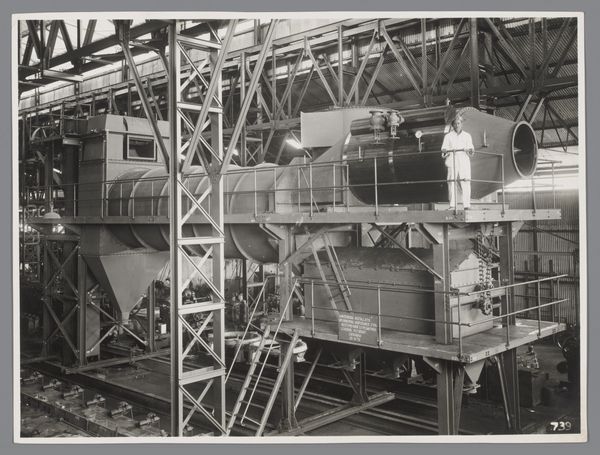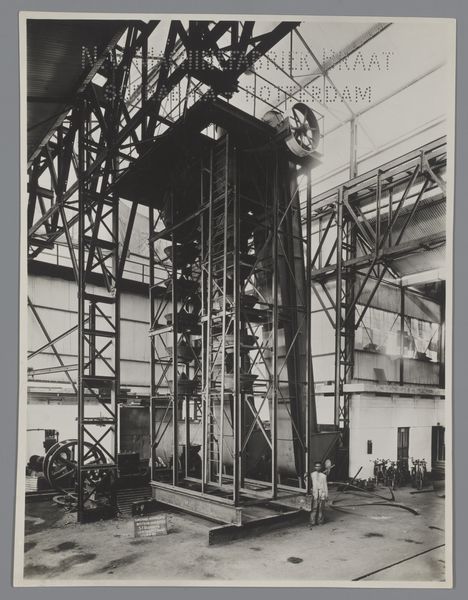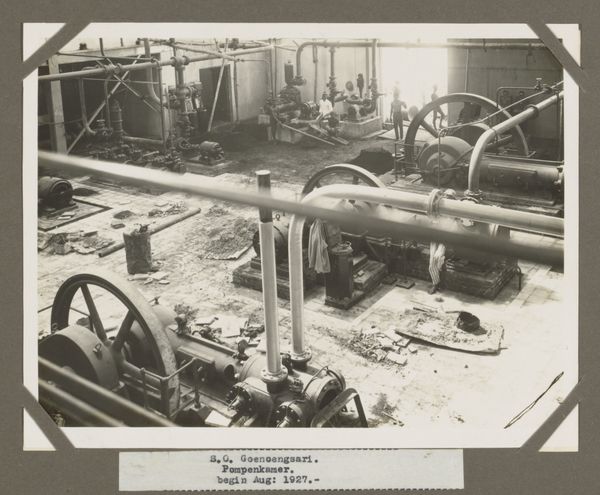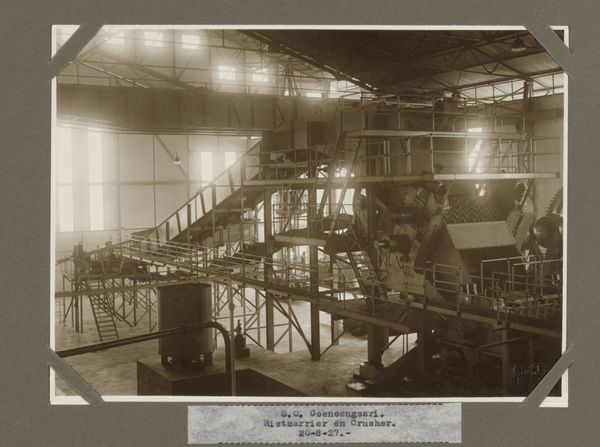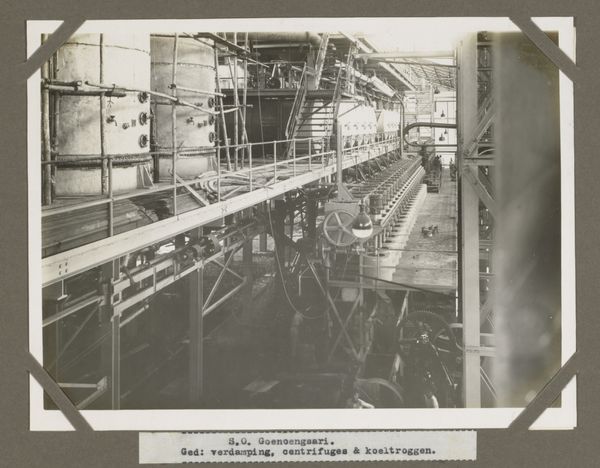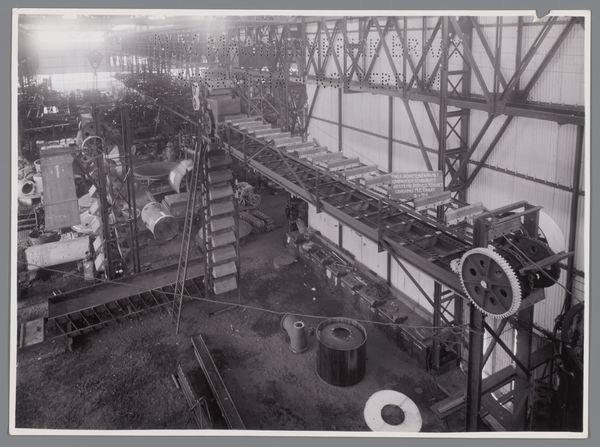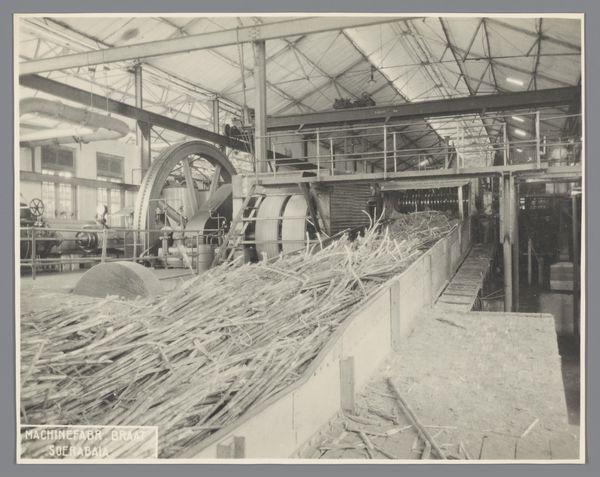
photography
#
landscape
#
photography
Dimensions: height 162 mm, width 220 mm
Copyright: Rijks Museum: Open Domain
Editor: Here we have a photograph from 1938, “Canecutter in bedrijf,” currently at the Rijksmuseum. It depicts what looks like a sugar cane processing plant. The scale is quite impressive; there’s such a focus on machinery, raw materials, and architectural features. How do you interpret this work? Curator: The power of this image lies precisely in its detailed documentation of the industrial process. I am immediately drawn to the way the photograph exposes the relationship between manual labor, represented by the sugarcane itself, and the mechanization that replaced much of it. This factory, its design, materials – all of it speak to specific production techniques and the context of a colonial system, wouldn’t you agree? Editor: Absolutely! I see the implied human element too. But I hadn't thought specifically about colonialism, though the Indonesian name on the factory hints at it. So, is it accurate to say that the factory infrastructure reflects not only the production of goods but also the system's larger influence on labor conditions and resource extraction? Curator: Precisely. Consider also how the photograph avoids romanticizing labor, opting instead to depict the bare industrial environment. This aligns with a critical perspective on production, emphasizing not only its visible aspects but also the hidden cost: worker exploitation, the depletion of natural resources… How do you think this awareness affected the social context in which this photograph was taken? Editor: That’s fascinating. I guess it raises the question of whose story gets told and how. Focusing on materials really opens up this new perspective for me. I'll never see photographs the same way. Curator: Agreed. The photograph invites us to reconsider art beyond the mere aesthetic.
Comments
No comments
Be the first to comment and join the conversation on the ultimate creative platform.
